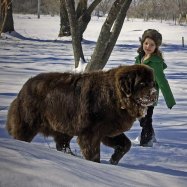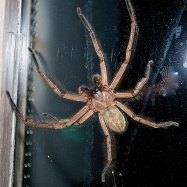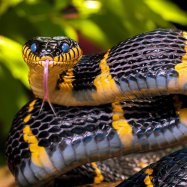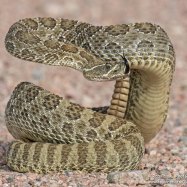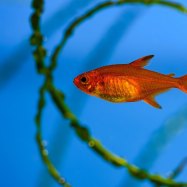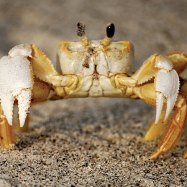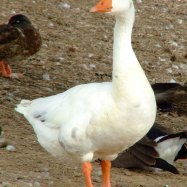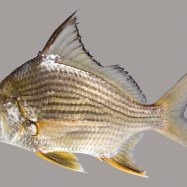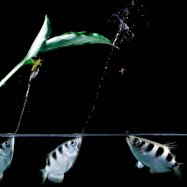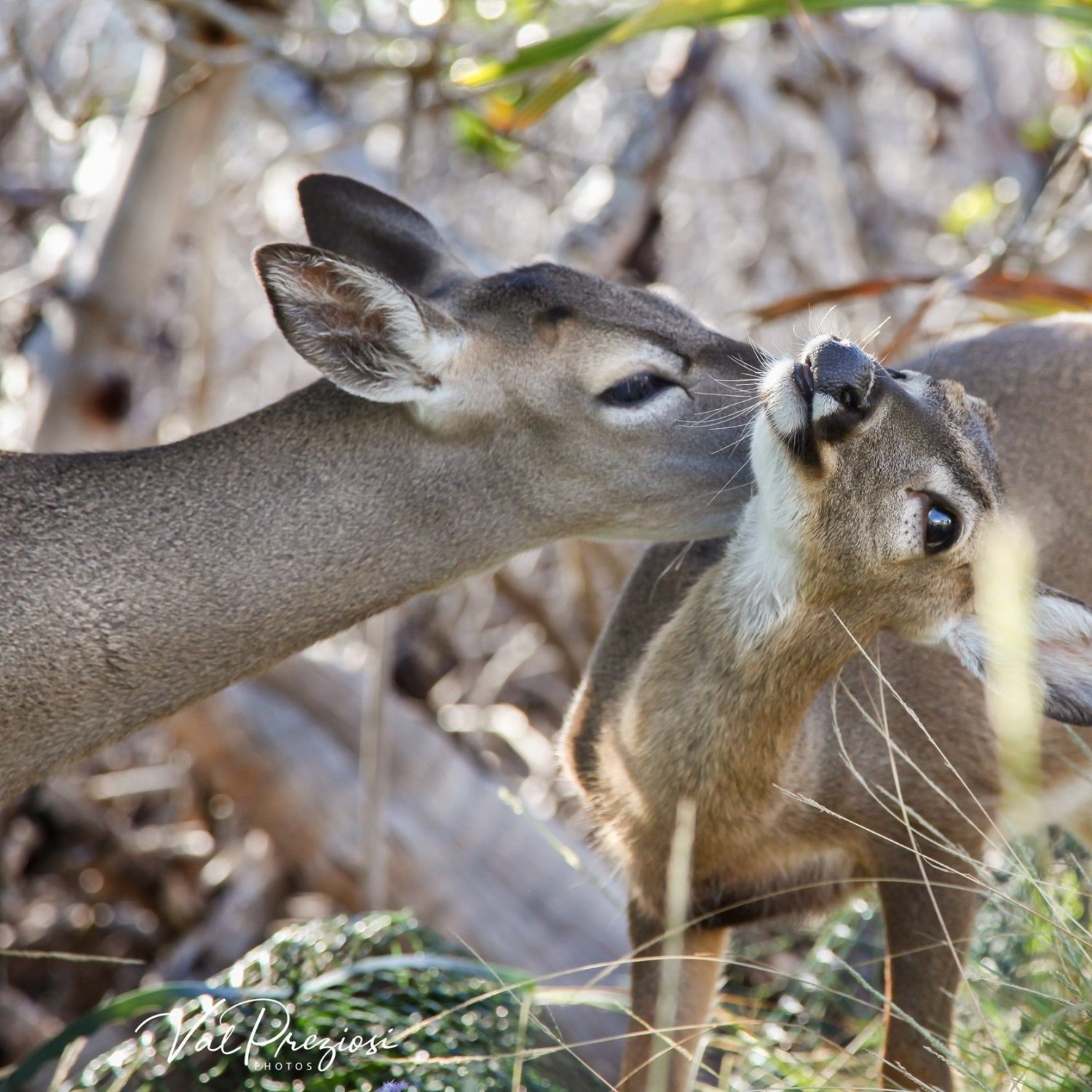
Key Deer
2.5 to 3 feet
The Key Deer, found in the Florida Keys, is a small and compact member of the Cervidae family. Standing at just 2.5 to 3 feet, they are a popular attraction for nature lovers. These gentle creatures are often seen grazing on native vegetation and are essential to the ecosystem. Their conservation efforts have been successful, but they still face threats such as habitat loss and collisions with vehicles. Let's continue to protect and admire these beautiful animals. #KeyDeer #FloridaKeys #Conservation
Animal Details Summary:
Common Name: Key Deer
Kingdom: Animalia
Habitat: Tropical hardwood hammocks, mangroves, and freshwater wetlands
The Fascinating World of Key Deer: The Smallest Species of North American Deer
From the vibrant blue waters of the Caribbean to the lush greenery of the Florida Keys, lies a tiny but mighty creature – the Key Deer. With its petite size and adorable appearance, it may seem like an unlikely inhabitant of its surroundings, but don't let its size fool you. The Key Deer is a remarkable species that has captured the hearts of both locals and tourists alike. In this article, we will delve into the fascinating world of the Key Deer, exploring its unique characteristics and the importance of preserving its natural habitat Key Deer.A Special Kind of Deer
Before we dive into the details of the Key Deer, let's first understand its classification and scientific name. The Key Deer belongs to the Animalia kingdom, the Chordata phylum, and the Mammalia class. It is a member of the Cervidae family and belongs to the genus Odocoileus, which is derived from the Greek words "odous" meaning "tooth" and "koilos" meaning "hollow." Its scientific name is Odocoileus virginianus clavium, with "clavium" referring to its geographical origin, the Florida Keys in the United States.The Key Deer's Habitat and Distribution
As its common name suggests, the Key Deer can only be found in the Florida Keys, a string of islands located at the southern tip of Florida. Within this area, they inhabit tropical hardwood hammocks, mangroves, and freshwater wetlands. These lush and diverse habitats offer the Key Deer access to food, shelter, and water, making it the ideal environment for their survival.Despite being a native to these islands, the Key Deer's population has greatly decreased due to human intervention. The introduction of non-native species, such as domestic dogs and cats, has threatened the deer's existence Kenyan Sand Boa. Additionally, habitat destruction and vehicle collisions have also contributed to the decrease in the Key Deer population. As a result, the Key Deer is now classified as an endangered species and is protected under the Endangered Species Act.
The Key Deer's Physical Characteristics
The Key Deer is the smallest species of North American deer, with mature adults measuring between 2.5 to 3 feet in length and weighing between 50 to 70 pounds. Despite its small size, the Key Deer boasts a powerful body with muscular legs, making it a fast and agile runner. Its body shape is also compact, with a short neck and small head, giving it a cute and charming appearance.One of the most unique features of the Key Deer is its coloration. During the summer months, their fur appears reddish-brown, which helps them blend in with the dense vegetation of their habitat. In the winter, their fur turns grey-brown, which provides better camouflage against the bare trees and vegetation. This change in color is known as molting and helps the Key Deer survive in its natural environment.
Herbivores at Heart
The Key Deer is a herbivorous animal, meaning it feeds primarily on plants. In their natural habitat, they have access to a wide variety of plants, including grasses, leaves, and fruits. Their small size also allows them to access food sources that are not available to larger animals, giving them a unique advantage.Apart from foraging in the wild, the Key Deer also relies on certain plants as a source of water. In the dry season, they can be seen licking the moisture from leaves and fallen fruits. This adaptation helps them survive in an environment where water sources may be limited.
The Impact of Humans on the Key Deer
As mentioned earlier, humans have played a significant role in the decline of the Key Deer population. Aside from their introduction of non-native species and habitat destruction, another major threat to these creatures is vehicle collisions. The Florida Keys are known for their scenic drives, attracting tourists and locals alike. Unfortunately, this also means an increase in traffic, resulting in more accidents involving Key Deer.To address this issue, the Florida Keys National Wildlife Refuge has implemented measures to protect the Key Deer from vehicle collisions. This includes the installation of underpasses and fencing along roads, as well as speed limit reductions in crucial areas. As a result, the number of Key Deer killed in road accidents has significantly decreased, giving hope for the survival of this precious species.
The Importance of Conservation
The Key Deer may be small in size, but it plays a vital role in maintaining the balance of its ecosystem. As herbivores, they help regulate the vegetation in their habitat, preventing any overgrowth or depletion. In addition, their presence also supports other species in the food chain, making them a crucial part of the local ecosystem.Conservation efforts are integral to preserving the Key Deer and its habitat. Through various initiatives, such as habitat restoration and population monitoring, we can ensure a sustainable future for this unique species. It is also crucial to educate the public about the Key Deer and its importance, as well as how we can coexist with these creatures without causing harm.
An Icon of the Florida Keys
The Key Deer holds a special place in the hearts of the locals and tourists of the Florida Keys. They have become an iconic part of the landscape and a symbol of the region's natural beauty. These endearing creatures have also inspired the creation of various souvenirs, from t-shirts to keychains, further cementing their place in the community.Visitors to the Florida Keys can also get a chance to see the Key Deer up close and personal through various eco-tours and wildlife viewing opportunities. These responsible and sustainable methods of experiencing the Key Deer allow for a deeper appreciation and understanding of these magnificent creatures.
The Future of the Key Deer
Thanks to conservation efforts and the protection of their natural habitat, the Key Deer population has slowly but steadily increased in recent years. It is a promising sign for the future of this remarkable species. However, constant vigilance and continued efforts are crucial to maintain their growth and prevent any further decline.The Key Deer is a testament to how humans can have both a negative and positive impact on the environment. By taking responsibility for our actions and making conscious efforts to preserve and protect the natural world, we can ensure a future where species like the Key Deer continue to thrive.
In Conclusion
The Key Deer is a true gem of the Florida Keys, with its charming appearance and important role in the local ecosystem. As the smallest species of North American deer, it has captured the hearts of many and serves as a reminder of the beauty and diversity of our planet. By understanding and appreciating this fascinating creature, we can work towards their conservation and protect their future for generations to come. After all, as the saying goes, "In the end, we will conserve only what we love; we will love only what we understand, and we will understand only what we are taught." Let us all do our part in protecting the Key Deer and the incredible natural world around us.

Key Deer
Animal Details Key Deer - Scientific Name: Odocoileus virginianus clavium
- Category: Animals K
- Scientific Name: Odocoileus virginianus clavium
- Common Name: Key Deer
- Kingdom: Animalia
- Phylum: Chordata
- Class: Mammalia
- Order: Artiodactyla
- Family: Cervidae
- Habitat: Tropical hardwood hammocks, mangroves, and freshwater wetlands
- Feeding Method: Herbivorous
- Geographical Distribution: Florida Keys in the United States
- Country of Origin: United States
- Location: Florida Keys
- Animal Coloration: Reddish-brown during summer, grey-brown during winter
- Body Shape: Small and compact
- Length: 2.5 to 3 feet
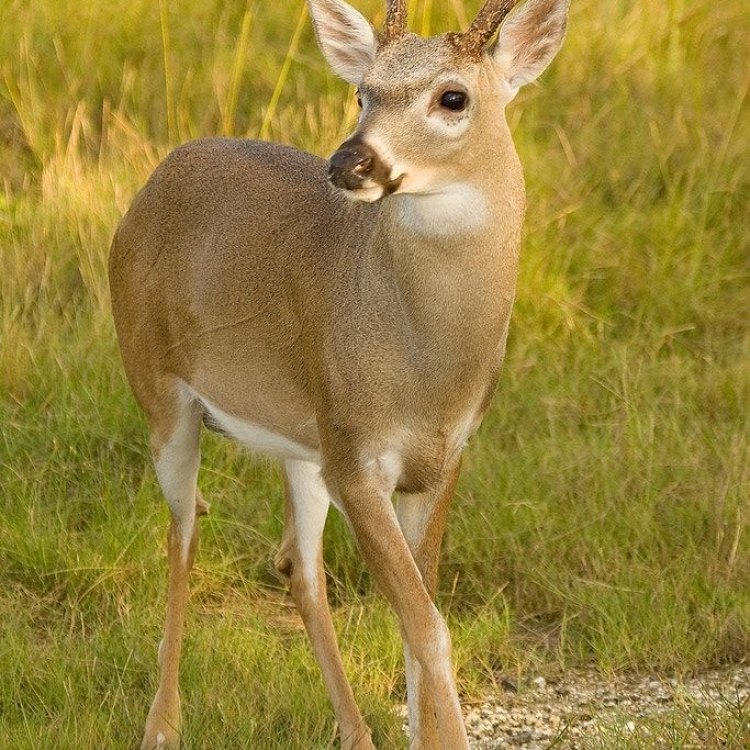
Key Deer
- Adult Size: 2.5 feet tall at the shoulder
- Average Lifespan: 8 to 10 years
- Reproduction: Sexual
- Reproductive Behavior: Polygynous
- Sound or Call: Whistle-like alarm calls
- Migration Pattern: Non-migratory
- Social Groups: Solitary or in small groups
- Behavior: Nocturnal and crepuscular
- Threats: Habitat loss, predation, disease, and human activities
- Conservation Status: Endangered
- Impact on Ecosystem: Key species for the Florida Keys ecosystem
- Human Use: Tourism
- Distinctive Features: Small size, stocky build, and a short tail
- Interesting Facts: 1. Only found in the Florida Keys 2. Considered the smallest subspecies of white-tailed deer 3. Listed as an endangered species since 1967
- Predator: American alligator, Florida panther, and domestic dogs
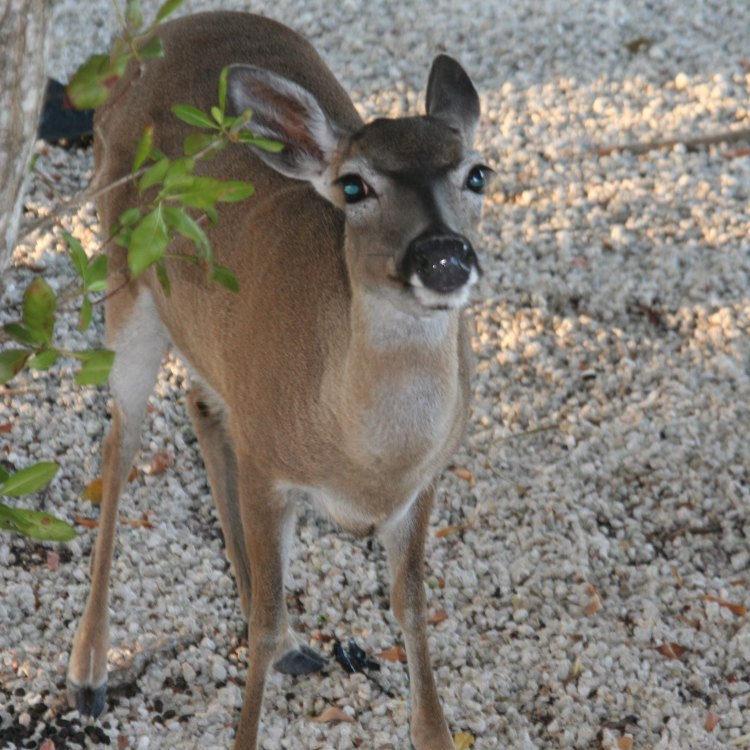
Odocoileus virginianus clavium
The Unique and Endangered Key Deer: A Species Critical to the Florida Keys Ecosystem
The Florida Keys, a string of islands stretching from the southern tip of Florida, is home to an array of beautiful and diverse wildlife. One particular creature that stands out is the Key deer, a subspecies of the white-tailed deer found only in these islands. These small but mighty animals play a crucial role in the Florida Keys ecosystem and have faced numerous threats that have led them to be listed as an endangered species. In this article, we will delve into the fascinating world of Key deer, exploring their distinctive features, behavior, threats, and importance in the fragile ecosystem PeaceOfAnimals.Com.Distinctive Features
Key deer are known for their small size, stocky build, and short tail. They stand at only 2.5 feet tall at the shoulder and weigh between 55 to 80 pounds, making them the smallest subspecies of white-tailed deer in North America. Their small size is thought to be an adaptation to their island habitat, where resources are limited. Despite their small stature, they are agile and athletic, capable of running up to 35 miles per hour and swimming between islands to find food and shelter.These deer have a stocky build with stubby legs and a round face, giving them a cute and cuddly appearance. Their coat is a reddish-brown color in the summer, which turns to a grayish-brown in the winter to help them camouflage with their surroundings. They also have a small white spot on their throat, which distinguishes them from other subspecies of white-tailed deer.
Behavior
Key deer are predominantly nocturnal and crepuscular, meaning they are most active at dawn and dusk Killer Clown Ball Python. This behavior helps them avoid the high temperatures during the day and reduces their risk of predation. They are also solitary animals, although they can be found in small groups during the breeding season. These groups form around a dominant male or "buck," who mates with multiple females or "does." This type of reproductive behavior is known as polygyny.One of the most distinct behaviors of Key deer is their whistle-like alarm calls. These calls are often used to alert other deer in the area of potential danger. They primarily use this call when they sense the presence of predators such as the American alligator, Florida panther, and domestic dogs. Along with their agile movements and acute senses, these calls play a vital role in their survival in the wild.
Threats and Conservation Status
Despite their elusive behavior, Key deer face numerous threats in their native habitat. The biggest threat to their survival is habitat loss, as human development and urbanization continue to encroach upon their habitats. This not only reduces their available food and shelter but also increases their risk of collisions with vehicles.Another significant threat is predation. While Key deer have minimal natural predators, urbanization has brought about an increase in domestic dogs, which can harm or kill the deer. In addition to this, disease outbreaks, such as the recent bluetongue virus, have also taken a toll on the deer population.
All these factors combined have led Key deer to be listed as an endangered species since 1967. The United States Fish and Wildlife Service has implemented various conservation efforts, such as habitat restoration and protection, to help protect these animals. However, with only around 1,000 Key deer left in the wild, they remain at great risk.
Impact on the Ecosystem
As the only native deer species in the Florida Keys, Key deer play a crucial role in the island's delicate ecosystem. They are considered a keystone species, meaning they have a disproportionately large impact on their environment compared to their numbers. These deer help regulate the population of plants, which, in turn, helps maintain the balance of the entire ecosystem.Moreover, their consumption of plants and fruits also aids in seed dispersal, promoting new plant growth and diversity. They also serve as prey for other animals, making them a vital part of the food chain. Without Key deer, the Florida Keys ecosystem would suffer greatly and potentially face dire consequences.
Human Use and Tourism
With their small size, cute appearance, and unique behavior, Key deer have become a popular tourist attraction in the Florida Keys. Visitors often take tours and hikes to see these elusive creatures in their natural habitat. Many also opt to contribute to conservation efforts by purchasing merchandise or making donations towards their protection.Unfortunately, irresponsible human activities, such as feeding or approaching these animals, can have negative impacts on their behavior and survival. It is essential for tourists to respect the natural behaviors and boundaries of Key deer to prevent any harm to their fragile population.
Interesting Facts
Aside from their distinct features and behavior, Key deer also have some interesting facts that make them a unique subspecies. Firstly, they are only found in the Florida Keys, making them a crucial part of the region's identity. They are also known to be excellent swimmers and have been spotted swimming between islands to find food and resources.In addition, Key deer were once hunted for their meat, hides, and antlers, but are now strictly protected. They are also considered a symbol of conservation and have been featured on postage stamps, license plates, and even in local art.
In Conclusion
The Key deer, with its small size, unique behavior, and critical role in the Florida Keys ecosystem, is truly a one-of-a-kind species. Despite the numerous threats they face, they continue to survive and thrive in this beautiful but vulnerable region. As visitors and inhabitants of the Florida Keys, it is our responsibility to respect and protect these amazing creatures, ensuring their survival for generations to come.
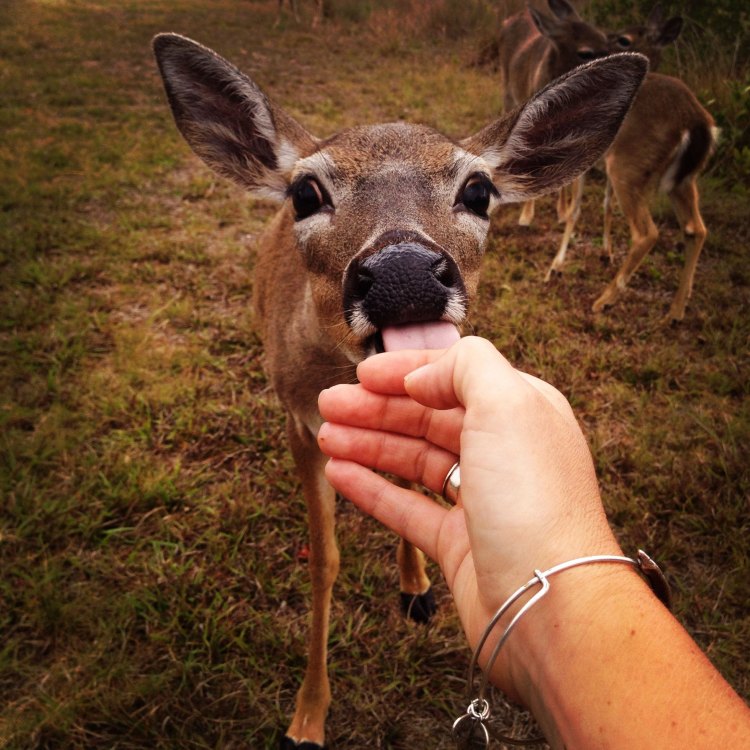
The Fascinating World of Key Deer: The Smallest Species of North American Deer
Disclaimer: The content provided is for informational purposes only. We cannot guarantee the accuracy of the information on this page 100%. All information provided here may change without prior notice.

